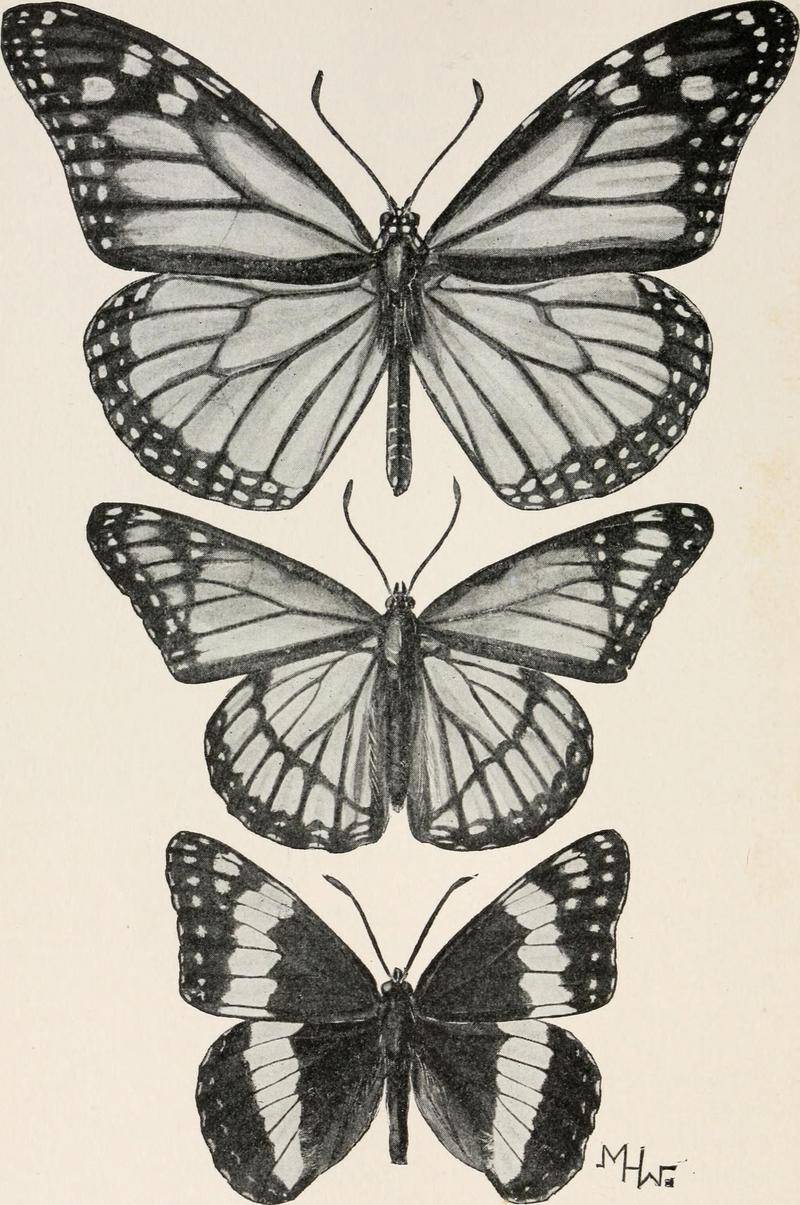monarch butterfly (Danaus plexippus), viceroy butterfly (Limenitis archippus) FIG. 263. — The mimicking of the inedible monarch butterfly by the edible viceroy.The figure at the top is the monarch, Anosia plexippus. The middle figure is theviceroy, Basilnrchia archippus. The lowest figure is another member of the samegenus, Basilarchia, to show the usual color pattern of the species of the genus.
Title: Evolution and animal life; an elementary discussion of facts, processes, laws and theories relating to the life and evolution of animals
Year: 1907 (1900s)
Authors: Jordan, David Starr, 1851-1931 Kellogg, Vernon L. (Vernon Lyman), 1867-1937
Subjects: Evolution
Source book page: https://archive.org/stream/evolutionanimall00jord/evolutionanimall00jord#page/n442/mode/1up
Author David Starr Jordan, 1851-1931; Vernon Lyman Kellogg, 1867-1937
Source: https://commons.wikimedia.org/wiki/File:Evolution_and_animal_life;_an_elementary_discussion_of_facts,_processes,_laws_and_theories_relating_to_the_life_and_evolution_of_animals_(1907)_(14773037152).jpg
The monarch butterfly or simply monarch (Danaus plexippus) is a milkweed butterfly (subfamily Danainae) in the family Nymphalidae. Other common names depending on region include milkweed, common tiger, wanderer, and black veined brown.
The viceroy butterfly (Limenitis archippus) is a North American butterfly that ranges through most of the contiguous United States as well as parts of Canada and Mexico.
